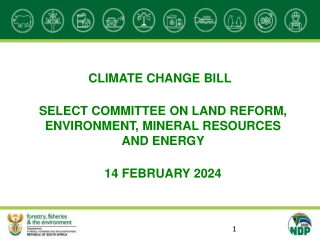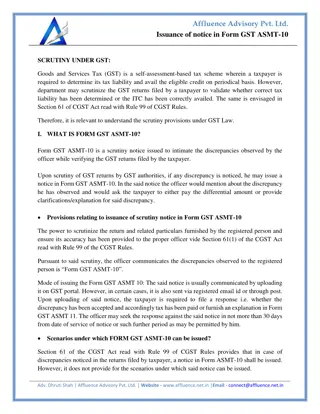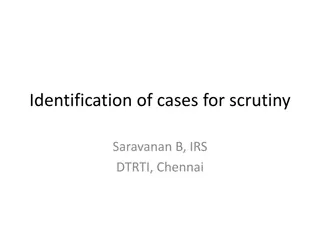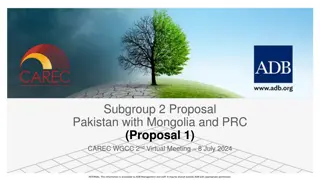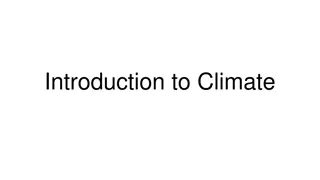
Proving the Effectiveness of Gender-Responsive Climate Programmes
This content discusses challenges and solutions related to Gender-Responsive Climate Budgeting (GRCB) along with the importance of proving the effectiveness of gender-responsive climate programmes. It addresses issues such as greenwashing, competition with other priorities, credibility, sustainability, and benefits-based tagging/scoring. The content emphasizes the need for structured systems to enhance credibility and create incentives for budget redesign to improve fund quality.
Download Presentation

Please find below an Image/Link to download the presentation.
The content on the website is provided AS IS for your information and personal use only. It may not be sold, licensed, or shared on other websites without obtaining consent from the author. If you encounter any issues during the download, it is possible that the publisher has removed the file from their server.
You are allowed to download the files provided on this website for personal or commercial use, subject to the condition that they are used lawfully. All files are the property of their respective owners.
The content on the website is provided AS IS for your information and personal use only. It may not be sold, licensed, or shared on other websites without obtaining consent from the author.
E N D
Presentation Transcript
GRCB Tagging and Scoring: Common Challenges and Solutions CLIMATE SCRUTINY CLIMATE SCRUTINY
We say We say Gender responsive climate programmes are - more effective and - more equitable How do we prove that statement? How do we prove that statement? And how do we get credit for it in the budget?
Challenges with GRCB Challenges with GRCB Suspicions about greenwashing or genderwashing Competition with other cross-sectoral priorities Programme budget reforms are challenging without adding GRCB Many institutions broadening definition of climate finance What happens if trends are negative Capacity , especially relating to roles and mandate
Greenwashing and Greenwashing and Genderwashing Genderwashing OECD DAC objectives-based system (2 = primary, 1 = secondary/implicit, 0 = no) is OK as a start But it s often difficult to decide And especially difficult to assign %s to OECD categories MoFs respond how do I know you re not exaggerating? We need a more structured system that has clear assumptions that can be debated Build on experience with Multi-Criteria Analysis and Cost Benefit Analysis, both of which are known in government
Credibility AND Sustainability Credibility AND Sustainability At first sight, the problem is credibility with tags/scores But there are bigger problems arising from low credibility Loss of interest and commitment if there is limited confidence Trends and patterns can be distorted, leading to poor decisions (including abandonment if trends are negative) Puts a focus on trends rather than on the quality of expenditure If the score is linked benefits, then it is more sustainable because The most valuable function of budget tagging is NOT to demonstrate trends but to create incentives in the budget to redesign to improve the quality of available funds
Benefits Based Tagging/Scoring Benefits Based Tagging/Scoring - - Climate Climate Used in Asia (Thailand, India, Indonesia, Cambodia ) and a little in Africa (eg Malawi, piloting in South Africa?) Needs to accommodate dedicated climate expenditure (eg on proofing) and development expenditure that just becomes more valuable with CC Basic principle is CC score is (B-A)/B, where B = the benefits when CC is taken into account A = the benefits when CC is ignored Use existing appraisal methods (qualitative, quantitative or mixed) and evidence (eg studies, expert opinion) Complements not replaces OECD DAC
Example from Malawi CPEIR Name of Programme: Nature of Underlying CC Impact on People and Ecosystems: Significance of CC in Objectives: Malawi Flood Emergency Revovery Programme (MFERP) Big issue is flooding. Heavily silted rivers as the rivers have dried out. Rivers are also changing course and causing loss of property. Livelihoods High Benefits Level (A) Implications for CC on Benefit Without the plans then nothing will work. Won't be able to address root challenges of climate change without plan Level (B) Coordinated sector planning in district council and villages on climate change 3 H Increased awareness of climate change within communities (sensitisation) Levels of awareness are there as communities can see climate change happening for themselves 2 L Improve agricultural inputs leading to increased agricultural production Benefit of increased agricultural production is directly linked to increased shocks from climate change Benefit of increased agricultural production is directly linked to increased shocks from climate change The benefit is affected by CC, but this probably wouldn t be very significant because it is hard to get farmers involved in sustainable land managmeent practices. Could be a small extra benefit, as access to market will increase ability to overcome effects of flooding. Increased deforestation as people's livelihoods are changing as a result of CC (less farming and more trees being cut down). Therefore the protection of the forest cover by the project is more valuable. 2 H Increase of irrigated land 2 H Sustainable land management practices by farmers 2 M Improved access to markets and other social services through rehabilitation 2 L Increased forest cover 2 M Adaptation Benefit Share (ABS) Ignoring costs 18%
Benefits Based Tagging Scoring: Benefits Based Tagging Scoring: Possible Implications for Gender Possible Implications for Gender Obvious potential is to base the score (the GB%?) on the proportion of the benefits that go to women eg gender neutral 0%, all benefits to women = 100% Would encourage line ministries to undertake beneficiary incidence analysis of some sort past initiatives (eg Poverty & Social Impact Assessment) Doesn t capture benefits of involving women in delivery Could use the B-A principles to capture both impact on women and women s ability to deliver higher benefits Can be done quantitative, qualitative, mixed
Benefits Based Tagging/Scoring Benefits Based Tagging/Scoring - - GRCB GRCB Can do GB% and CC% separately (or GB%, MI% and AD%) Simple and clear but: Doesn t demand assessment of how climate benefits are increased by gender responsivity (often at no cost) Vulnerable to proliferation of cross-sectoral priorities (ie not just GB% and CC%, but also DRR% and WAT% etc etc) Adds multiple columns/codes in budget A single composite GRC% might be possible Picks up benefits of gender responsive climate programmes Encourage genuine G/C collaboration in design More challenging and needs more capacity but to implement and interpret but it reflects the real substance of GRCB
What happens if trends are negative? What happens if trends are negative? Easy for misleading patterns to be generated by big projects with small gender or climate contributions given CC%/GB% of eg 25% Philippines abandoned CRB when the new government cut climate responsive programmes and didn t want that highlighted Concentrating on benefits means that the focus is on improving effectiveness and trends are less important
Capacity Capacity Often reported as a major problem Focus is often on lack of skills Black of clear and consistent methods/guidance is often as important Ideally based on existing methods of assessment Methods can be simple and based on qualitative assessment that structures expert opinion in a way that creates a framework for debate Most programmes only need to be assessed once, with a clear record of the way the framework has been applied, so that they can be updated, if justified
Options for Strengthening GRCB Options for Strengthening GRCB Baseline GCPEIR conducted by consultants and CSO Tagging for both gender and CC separately using OECD DAC categories (ie 2/1/0) Simplest qualitative benefits scores for GB% and CC% Case studies of quantitative benefits for key programmes Debate about programmes giving best gender/climate benefits Support to line ministries to redesign programmes to justify higher GB% and CC% Changes to budget submission guidelines to require reporting on GB% and CC% (pilot then mandatory) Case studies on combined gender with climate scores (GRC%)



